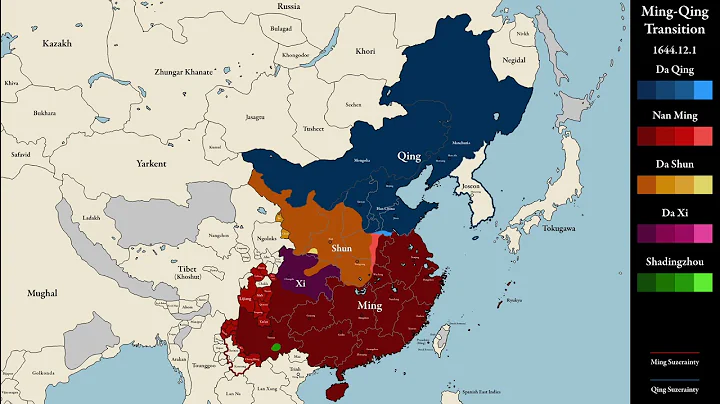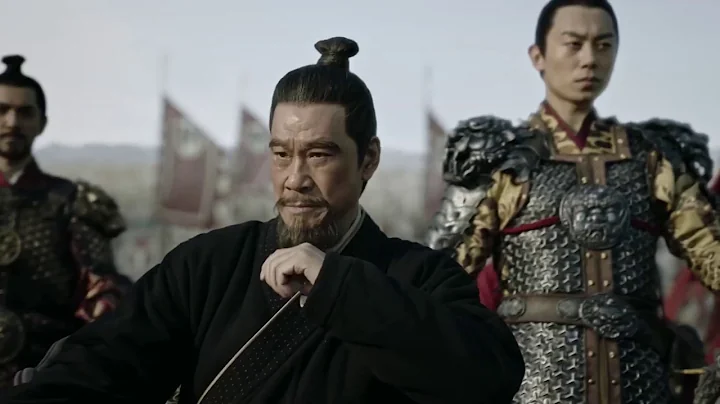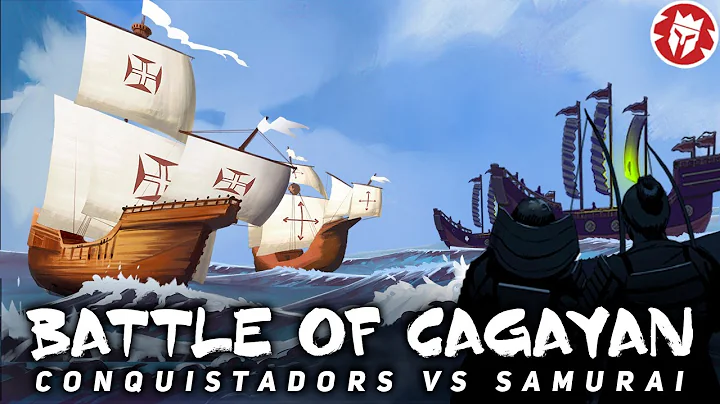In April the second year of Jiajing in the Ming Dynasty, Ningbo City at this time was a good time for Yangliuyiyi and the spring breeze. Due to its unique geographical location, Ningbo City has been the only place where Japanese tributary missions landed since the founding of the Ming Dynasty.
Every few years, there will be a huge fleet of several or dozens of ships, carrying full tributes to the shore, and after verification by the Municipal Department of Ships, these fleets will continue to go north to meet the emperor.

Above_ Merchant ships coming to China for tribute
- The Ming Dynasty's tributary diplomacy will be transformed into a tributary trade
. Secondly. In order to highlight the prosperity of the Ming Dynasty, the number of gifts returned to the tributary country was often several times that of the tribute. Although the Ming Dynasty, as the suzerain state, always put the form and purpose of tributary first, but each tributary state has long since grasped the nature of tributary trade. In order to obtain economic benefits, the tributary countries headed by North Korea, Ryukyu, and Japan continued to send additional tributary missions to the Ming Dynasty. The tributary diplomacy in the mid-Ming Dynasty has degenerated into tributary trade.
In fact, the successive tributary missions were also a big financial burden for the Ming Dynasty. In order to demonstrate the demeanor of a great country, the tributary missions must be well received after they arrive, and both food and accommodation must be higher than the social average. In the third year of Hongwu (1370 AD), the Ming court established three port cities with Ningbo, Quanzhou, and Guangzhou as trading ports. Three high-end hotels were specially set up to receive tributary missions under the three Shibosi divisions.

Above_ the station dedicated to receiving Japan's Shibosi-Ningbo

Above_Ningbo, Zhejiang Province
In addition to the reception fees, the imperial court also spends high prices on most of the goods brought by the mission. In order to spread the good name of the celestial dynasty and benefit the foreigners in the foreign countries, after the official diplomatic etiquette is completed, there will be private businessmen and the mission for limited free trade. Generally speaking, the period of this free trade is three to five days, and only the most loyal tributaries of the Ming Dynasty, North Korea and Ryukyu, can break through this restriction. The
tributary missions brought their country’s special products to the dynasty to sell them, and then exchanged the copper coins they harvested for Ming dynasty products that the country lacked. These products were then sold to their own nationals after returning to the country. This has been profitable several times over, no wonder that tributary diplomacy will be transformed into tributary trade.

Above_Ryukyu's tribute trade ship to Ming Dynasty
- Japan's Hosokawa and Ouchi family tribute disputes
The tribute is so profitable, if it is not restricted, it will be the last naked fig leaf. Trade practices. At the same time, in order to reduce the financial burden of receiving missions, the Ming court formulated a system to limit the number of tributaries. The Ministry of Ritual of the Ming Dynasty would issue "Kanhe" to its authorities from time to time according to the specific conditions of each country. Only the missions holding the Khanhe could be received by the Ming court. Ocean-going merchant ships without a Khanhe were not allowed to call at ports, let alone go ashore.
In the second year of Jiajing, Japan was in the Warring States Period, and domestic regimes took turns to battle one after another. Originally, Japan's tributary power was in the hands of General Ashikaga Yoshimochi. After Ashikaga Yoshimochi lost power, the Hosokawa and Ouchi families fought for the tributary power.
That year, the Danes mastered the tributary survey and dispatched three ships to Ningbo Port. I heard that after the Ouchi clan sent the mission, the Hosokawa clan was unwilling to accept the people, and the Hosokawa clan only had an expired Hongji Kanhe. With an attitude of giving it a try, Hosokawa also sent his own delegation to Ningbo.

Above_ Japan Hosokawa's family pattern

Above_ Japan Ouchi's family pattern
Hosokawa's mission knows that they are incompatible with each other, so they bribe Ryan, the chief eunuch of Ningbo Municipal Bureau of Shipping. After accepting the bribe, Ryan took special care of the Hosokawa mission. Although the Hosokawa mission arrived later than the Ouchi mission, the inspection was earlier than the Ouchi mission. At the welcome dinner, Ryan also deliberately gave the Hosokawa mission The seat was placed on the seat of the Ouchi mission.
For the Ming Dynasty officialdom, especially the eunuchs in the Ming Dynasty officialdom, acceptBribery, favoritism and cheating are the same common things as gestures, but Ryan never imagined that his momentary confusion caused a terrible disaster.
The Ouchi Mission originally intended to hold the winning ticket, holding the only certificate of investigation, and arrived at Ningbo Port early, but they could not beat the silver that Hosokawa Mission gave Ryan. Without Ryan's cooperation, the Hosokawa mission would never see the Lord, let alone trade matters. It is of course impossible to complain, and there is no place to complain. Either go back to Japan in disgrace, or fight for a big fight, the Ouchi mission chose the latter.


Above_ the eunuch of the Ming Dynasty
- Ming Dynasty--Ningbo Tribute Incident
After the banquet, the ambassador and the ship attacked the small Sichuan troops from the Ming Dynasty soldiers. . Hosokawa was hit by a sudden attack, so he turned his head and turned, so he had to hold his head and scurry. After the Ouchi Mission finished fighting the Hosokawa Mission, the banquet hall was set on fire.
Although the eunuch Ryan was helping behind, the Hosokawa mission was still beaten by the Ouchi mission. In the end, the envoys of the Hosokawa Mission fled to Shaoxing City. The Ouchi Mission failed to surrender the enemy and burned, killed, looted, and finally regained the ship and returned to China.
Ming History records that in this incident, the Ming Dynasty lost five officers and numerous soldiers and civilians. The disaster caused the "Zhezhong Earthquake", and the people of Ningbo were unbearable.
This is the famous Ningbo tribute event in Ming history, also known as the battle of tribute and the Mingzhou Rebellion. Originally, it was to show the demeanor of a great power and enjoy the pleasure of power. This time, the two Japanese missions lost their energy. Two waves of Yi people fought hard on their own ground, wounded my officers and soldiers, killed my people, where did the Emperor Jiajing’s face fall?

Above_ the Emperor of Jiajing, Zhu Houxuan (September 16, 1507-January 23, 1567)
- z17
The cause of the Ningbo incident was not because of its drama, but its history. Because this incident directly led to the rebellion of the Japanese pirates that continued the Jiajing, Longqing, and Wanli dynasties.
The Japanese pirates of the Jiajing, Longqing and Wanli dynasties are called the late Japanese pirates. Unlike the Japanese pirates that people usually think of, the late Japanese pirates were a smuggling group mainly composed of Chinese businessmen, during which only a small number of Japanese and Koreans were employed. participate. And this smuggling group was forced out by Jiajing.


Above_The image of the Ming army in "Pirates of the Japanese Invaders"
Due to the bad effects of the Ningbo tribute incident, the imperial court calls for strict maritime bans. After discussion by courtiers, the Ministry of Rites asked to "strike the ship", that is, to close the Ningbo Ship Department and sever contact with Japan.
At this time, however, Japan had already cleared customs and trade with the Ming Dynasty for 122 years, and there were a total of fifteen batches of merchant ships going back and forth. Japan has a huge demand for silk, copperware, medicinal materials, sugar, porcelain, calligraphy and painting, lacquerware, cotton cloth and other items produced in the Ming Dynasty, and has become dependent on it. Suddenly closing the Ningbo Shipbuilding Department is tantamount to disaster for Japan.
At the same time, a group of merchants who rely on trade with Japan to survive and have a huge power formed near Ningbo. As the saying goes, cutting off people’s wealth is equivalent to killing their parents. The Ming government shut down the Ningbo Ship Division across the board, and neither was pleased. On the one hand,
is Japan’s urgent need for Ming Dynasty goods, and on the other hand, Ming Dynasty merchants are in urgent need of export profits. Smuggling came into being as soon as dry wood and raging fire met. In the worst case, the wealthy clans, officials, and businessmen along the coast of Ningbo colluded with each other. Because they were in the black zone and there was no government to provide order, these smuggling groups gradually formed their own armed forces.


Above_Pictures of Japanese pirates in "Pikoutu"
These smuggling groups are okay when they are calm, but they will harass the coastal surroundings as soon as the court has a strict naval ban, hoping to force the court to abandon the investigation by creating chaos. smuggling.
businessman Wang Zhi (also recorded as Wang Zhi in historical data) isAt that time, the biggest smuggling leader had written to the court to request the reopening of the sea ban before the closure of Ningbo Ships Division. Like the current underworld gangs, as long as the family sits in a big house, there will be order, and the result of a group of dragons without a leader is chaos. After the Wangzhi clique was crushed by Hu Zongxian, various smuggling cliques fought again, and the coastal areas became scorched earth again. The origin of all this was the Ningbo tribute event in the second year of Jiajing.
Text: Liu Bucheng
References: "History of Ming Dynasty"
text was created by the History University team, with pictures from the Internet, copyright belongs to the original author


![Chinese army vs Japanese pirates in 1557 [Eng Sub] 戚继光岑港战倭寇 - DayDayNews](https://i.ytimg.com/vi/-n_-E9OEHqo/hqdefault.jpg?sqp=-oaymwEcCOADEI4CSFXyq4qpAw4IARUAAIhCGAFwAcABBg==&rs=AOn4CLBoit3Anexy7siwQKlxJ-tKykI-CQ)


















